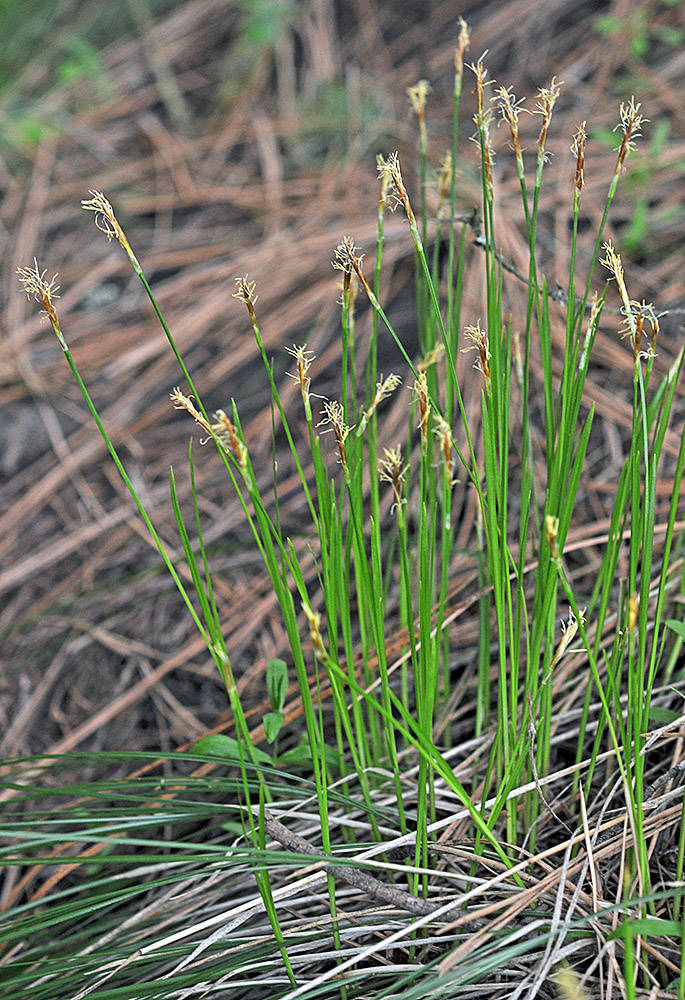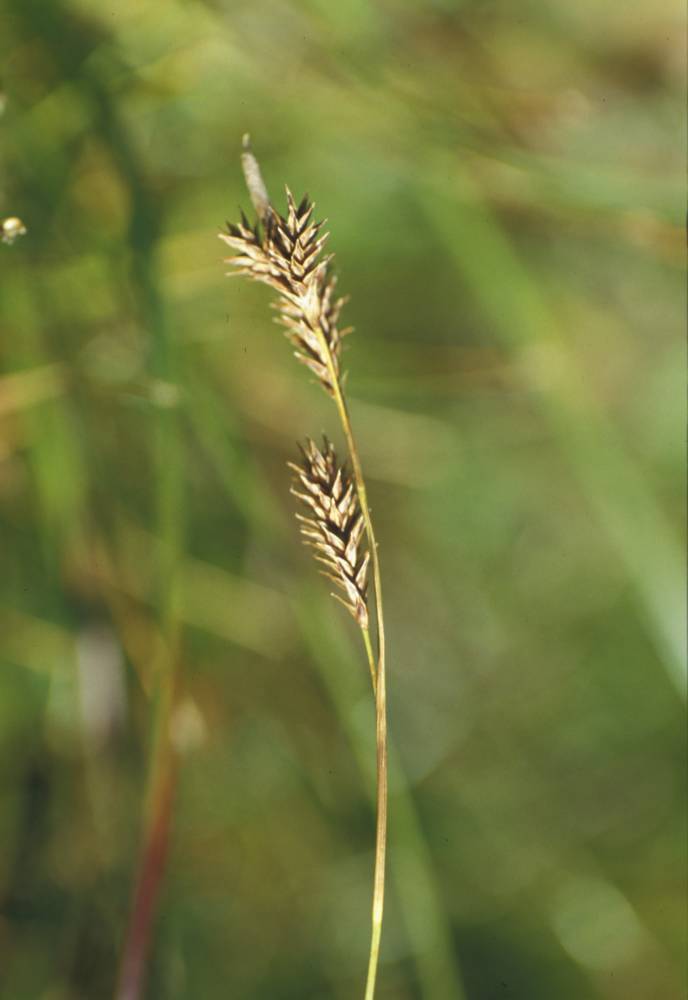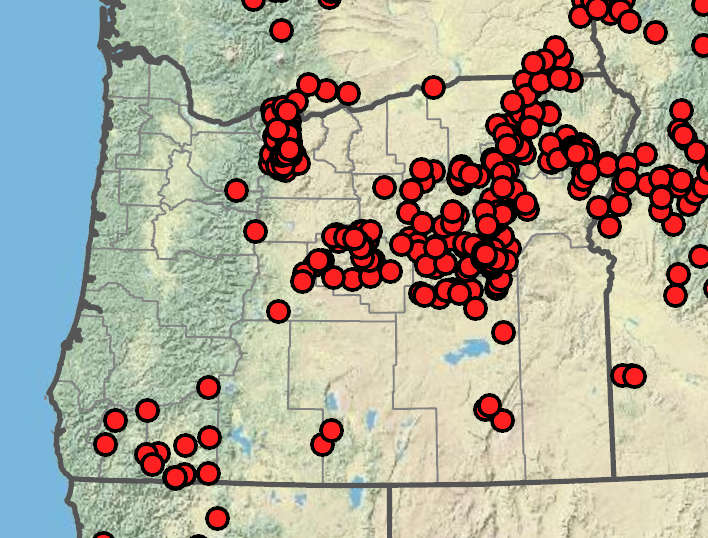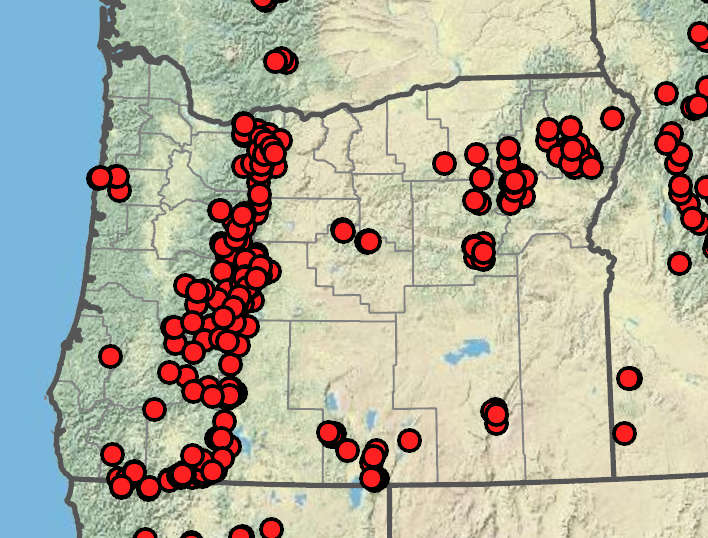Carex geyeri
Carex luzulina
elk sedge
spring sedge, woodrush sedge
1.1–3.5 mm wide; flat; evergreen; leathery; as long as or longer than the culms.
sheath fronts whitish hyaline;
blades 3–9 mm wide, glabrous.
spike solitary, androgynous, lacking inflorescence bracts; male terminal portion 1–2.5 cm long, separated from the 1–3 perigynia by a short internode.
lowest bracts with more or less inflated sheaths (5)10+ mm long;
lateral spikes crowded around the terminal one or separated; erect and nearly sessile or the lower ones drooping on long; slender peduncles; female or androgynous, 1.2–3.2 cm long; terminal spike male, 1.1–6.6 cm long.
obovate, rounded at the top, 5–7(8.5) × 1.8–2.8 mm, green; whitish, or brown;
beak small;
stigmas 3.
(3)3.5–5.5 × 0.9–1.6(1.8) mm; either mostly purple, or green with reddish or purple spots, usually glabrous, sometimes with sparse, spreading to appressed, usually long; soft; thin hairs, with several inconspicuous veins;
beak with distance from achene top to beak tip less than 2.5 mm;
stigmas 3.
trigonous.
trigonous.
the lower longer than the perigynia; the upper reduced; more or less brown with paler midrib and margins, pointed to awned.
shorter than the perigynia; reddish brown to dark purplish with a light mid-stripe;
margins sometimes white, glabrous.
Carex geyeri
Carex luzulina
Well-drained soils in dry, open, conifer forests, aspen stands, and openings, rarely in sagebrush, on both serpentine and nonserpentine substrates. 100–2500 m. BR, BW, Col, ECas, Lava, Owy, Sisk. CA, ID, NV, WA; north to southeastern British Columbia, east to CO, PA. Native.
Carex geyeri is a common ground cover in open forest, especially in northeastern Oregon, recognized by its tough, flat, evergreen leaves from dark, scaly rhizomes. Similar pinegrass, Calamagrostis rubescens, usually has hairy internodes and when in flower it is easily distinguished. Carex geyeri is important food for wildlife and livestock, especially in winter. In southwestern Oregon, C. geyeri can be confused with C. multicaulis, which is densely cespitose and has proportionately shorter, usually involute leaves, and longer, green, leaf-like, lower female scales.
Bogs and wet meadows. 600–3000 m. BR, BW, Casc, CR, ECas, Est, Sisk. CA, ID, NV, WA; north to British Columbia, east to WY. Native.
The broad, yellow-green leaves clustered at the base of the culm, together with the inflorescence bracts with more or less inflated sheaths, the pointy perigynia, and the reddish to purplish female scales, make C. luzulina unlike any other sedge in Oregon bogs. However, it is hard to point at any one consistent feature as identifying this species. Two varieties (sometimes treated as species) have been recognized in C. luzulina, but the traits supposedly distinguishing them vary independently. Variable C. luzulina is confused with Californian C. luzulifolia and C. fissuricola, which usually have perigynia with flat margins more than half as wide as the achene. In C. fissuricola, the perigynium faces, at least near the beak, have sparse, spreading-ascending, short, stiff bristles, and the pistillate scales have hairs on the distal margins.
Barbara Wilson, Richard Brainerd, Nick Otting
Barbara Wilson, Richard Brainerd, Nick Otting
- Local floras:
BC,
CA,
OR,
WA
- Local Web sites:
CalFlora,
CalPhotos,
Flora NW,
PNW Herbaria
WildflowerSearch
iNaturalist (observations)
USDA Plants Database
- LBJ Wildflower Center
- SEINet
- Plants of the World Online
- Encyclopedia of Life
- Wikipedia
- Google Image Search
- Local floras:
BC,
CA,
OR,
WA
- Local Web sites:
CalFlora,
CalPhotos,
Flora NW,
PNW Herbaria
WildflowerSearch
iNaturalist (observations)
USDA Plants Database
- LBJ Wildflower Center
- SEINet
- Plants of the World Online
- Encyclopedia of Life
- Wikipedia
- Google Image Search





